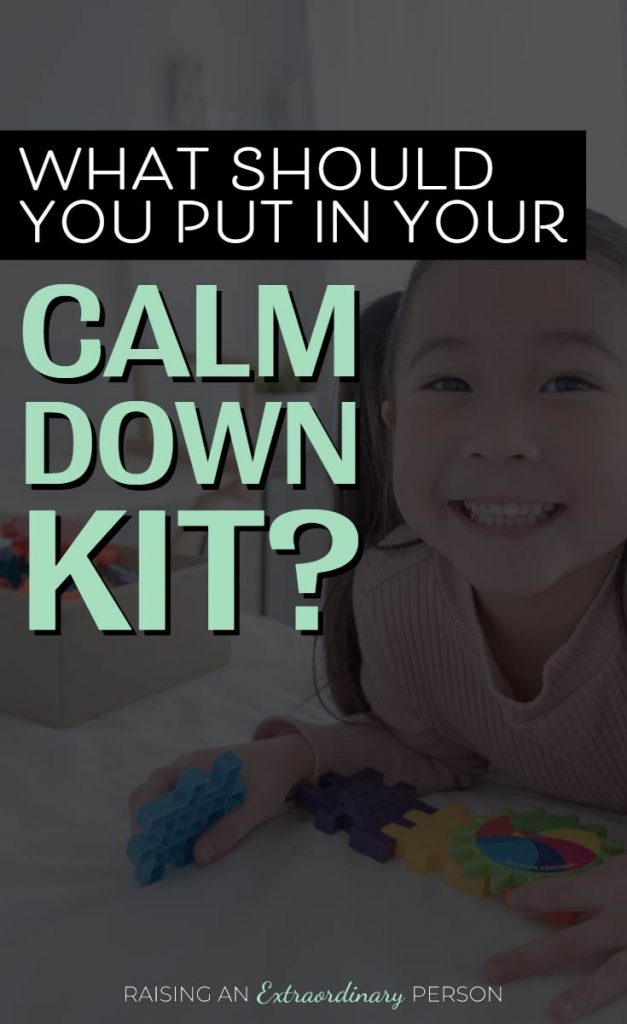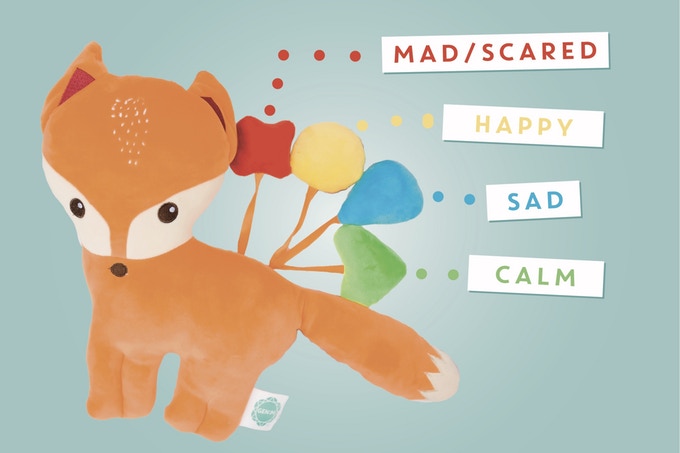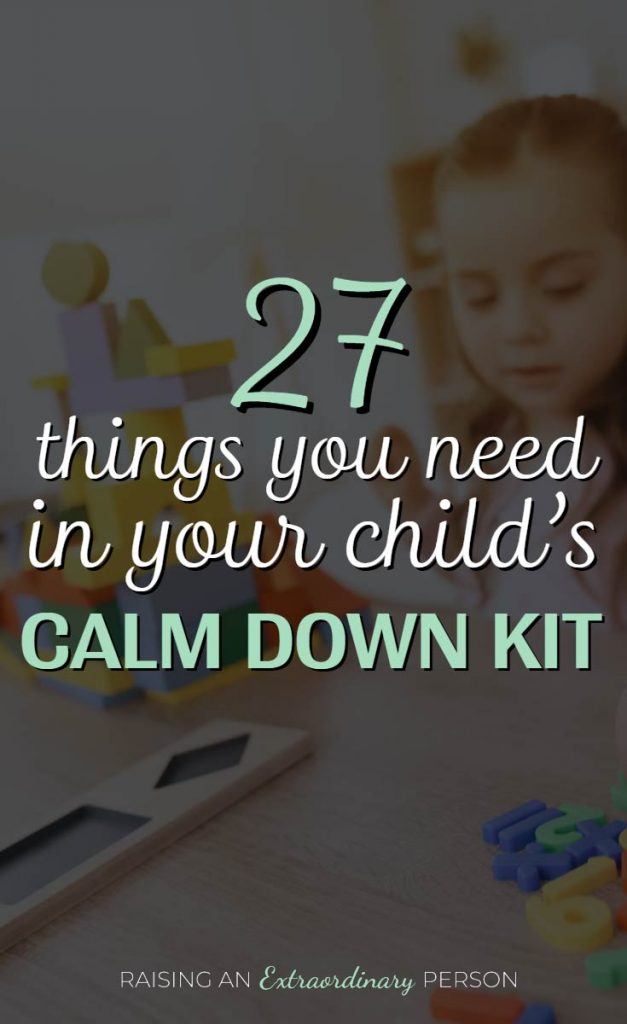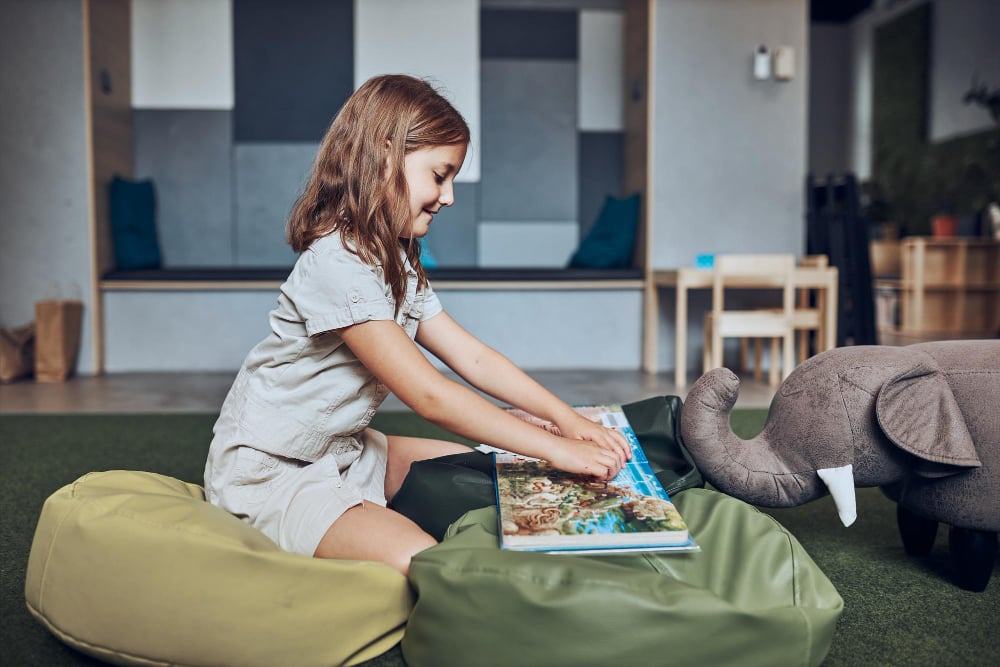What Should You Put In A Calm Down Kit?
What’s inside this article: A list of calming tools, toys, and activities to include in your child’s calm-down kit to help support emotional self-regulation. Includes ideas for kids of all ages.
Disclaimer: This post contains affiliate links.
Last month, my family transformed a corner in our dining room into a calm-down corner. This, of course, included a calm-down kit.
No exaggeration — this has been a total game-changer in our home.
Three kids, all at different ages and stages, all with different strengths and weaknesses, and this set up is benefiting them all.
So this leaves the question – what goes in a calm down kit?
Choosing Items Your Child Enjoys for their Calm Down Kit
A lot of people believe allowing a child to take a break and use activities or toys they enjoy when they’re engaging in inappropriate or unsafe behavior is the same as rewarding that behavior. And maybe that’s what you believe too, so I’m going to take a moment to explain why it’s so important to include items your child truly enjoys in their calm-down kit.
Some parents feel like this is rewarding bad behavior.
I’ve heard the argument, “So my child hits me, and I’m going to turn around and say ‘oh, let’s go color so you can calm down’ I don’t think that’s right because it’s rewarding bad behavior”
Calm-down Kits Do Not Reward Bad Behavior
Allow me to break it down as simply as I can.
- When a person is upset, they are unable to think rationally. This is a survival instinct.
- Children’s brains are not fully developed, so this emotional reaction tends to happen more frequently and in situations that may seem insignificant or unwarranted to us as adults.
- When this happens, children don’t respond to reason, logic, consequences, etc.
- This is why, when children are dysregulated (and we’re talking meltdown mode here, not just a little whiney), the only expectation you should have is for them to calm down. Everything else can wait until later.
- Once they’re calm, you can hold the original expectations, talk about what could have been done differently, hold your child accountable for their behavior in whichever way works best for your family.
To understand this in more depth, read: How Your Child’s Nervous System Impacts Emotional Regulation
Basically, the calm-down kit has nothing to do with rewards or punishments. It’s simply a tool to help your child regulate so their brain can return to a state where they’re able to process what you’re saying and what is happening in a logical way.
What To Put In A Calm-Down Kit:

Remember to choose items that are:
- age-appropriate
- enjoyable
- can be completed in a few minutes since your child is only taking a short break.
Timer
A timer is definitely a must for your kit. When children take a break to calm down, it should be for a short, set amount of time. I recommend somewhere between 5-10 minutes. Depending on the child, the environment, etc.
The first thing that should happen when your calm down kit is open, is the timer should be set.
There are lots of different types of timers out there, all are great in their own way. We use a digital timer at home.
- The Time Timer is a great choice because it’s visual and easy for children to understand even if they don’t have a great concept of time. I see these used a lot in schools.
- Digital timers are inexpensive and they’re a good choice as long as your child understands time without the need for a visual.
- Sand timers are also great visual times but you’re somewhat limited since you can’t adjust the amount of time with them.
Coloring Supplies
Coloring is a great choice for your calm-down kit. Choose coloring books or pages that relate to your child’s interests.
Choose coloring supplies that your child can use without direct supervision. You don’t want to give permanent markers to a toddler who may draw on the walls or put them in their mouths.
- I use these triangle crayons from Melissa and Doug for my three-year-old because he can’t break them.
- These scented markers are the best choice for my oldest because he’s my sensory seeker.
- For children who love to color and use fine detail in their artwork, colored pencils are probably the best option.
Putty
Putty is great for stress relief and mindfulness, making it a valuable component to any calm-down kit. Some people use slime as well. Slime is personally a no-go for me because it’s too easy for it to get stuck places it doesn’t belong.
We use Crazy Aaron’s Thinking Putty. It doesn’t dry out or stick to things, and there is an endless amount of color choices. My favorites are the ones that change colors and the ones that are scented.
Yoga Cards
Yoga is one of those things that really helps some people with self-regulation. It doesn’t work for everyone, but when it works, it works.
If your child enjoys yoga, add some yoga flashcards to your calm-down kit. This is a great way for you to co-regulate with your child.
Also, if your child is a high-energy sensory-seeker, be sure to check out these yoga poses for sensory seekers.
Fidgets
Fidget toys just give your child something to do with their hands, it doesn’t really take up any mental capacity and it can help you slow down racing thoughts. We have an array of fidgets in our calm down box.
I like to add new fidgets to the calm down box regularly so there are different things available for my kids to try.
Puzzles
Puzzles are another great addition to your box. The main thing to remember is that the puzzles should be easy enough that your child can complete them without getting frustrated.
Since your child is taking a break to calm down, you don’t want them to attempt anything too challenging.
- For my youngest, I have a few wooden peg puzzles like this one.
- I also have these 16 piece puzzles for my six-year-old and she’s able to complete them within a few minutes.
Tip: I store the puzzles in zip lock bags inside my calm down kit so my kids can just grab one, get comfortable, put it together and then put it away when they finish.
Activity Books
These are a hit with my oldest. He enjoys activities like mazes, word searches, spot the difference, etc. For my younger kids, I like the wipe-clean activity books for tracing letters, shapes, numbers, etc.
- Paint by sticker
- Fabric quiet books
- Tape activity book
- Amazing Mazes
- My first Wordsearch
- The Big Book of Wordsearch
- Wipe Clean: Early Learning
- Wipe Clean: Number Tracing
- Scissor Skills Activities
Digital Options
In today’s world, most kids have a tablet or phone they play on. While having screen time limits is a good thing, a little screen time can be a helpful tool for calming down, especially when traditional calm-down activities just aren’t clicking.
Apps like Breath, Think, Do with Sesame, puzzle games, or digital drawing on coloring apps are great digital options for a calm-down kit.
For older kids, calming online games like solitaire or idle games like My Little Terrarium can offer a peaceful, focused break, reducing overwhelm.
A short session with a simple game can be just what a child needs to reset, refocus, and regain calm.
Like anything, balance is key, but adding this as an option in your calm-down kit can be comforting when they need a moment to regroup.
SnuggleBuddies
Each of the kids got their own SnuggleBuddy when we created their calm-down corner. Since they’re super soft and cuddly, they make a great comfort item for children, but that’s not the best part about SnuggleBuddies.

Each SnuggleBuddy has four emoji shapes in their back pocket that children can use to identify emotions. I love how my kids can use them to share how they feel in a nonverbal way.
If you’re doing Zones of Regulation with your kids, it’s easy to incorporate your SnuggleBuddies into how you do Zones, since the colors match.
SnuggleBuddies are available online from Generation Mindful.

A storage bin
Of course, you need some type of storage bin to keep everything together in your calm-down kit. This is obviously essential or things will become messy, disorganized, or lost.
Make sure you purchase a bin that’s sturdy, fits all the items in your kit and closes firmly. I prefer containers with lids that actually latch.
Implementing Your Calm Down Kit
Now that you know exactly what to put in your kit, take the time to read the following posts, so you can be sure to implement the kit successfully!
– How to use breaks to teach self-regulation
–How to create the ultimate calming corner
–Time-In vs. Time-Out – which one should you use?


